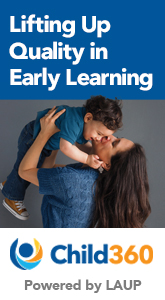ExchangeEveryDay Past Issues
 << Previous Issue
| View Past Issues | | Next Issue >>
<< Previous Issue
| View Past Issues | | Next Issue >> -Aurora Levins Morales, Writer, Artist, Historian, Teacher
"Kyung Hee Kim, Ph.D., an educational psychologist at the College of William & Mary, in Virginia, has spent the past decade poring over the creativity scores of more than 300,000 American K-12 students. The news is not good: 'Creativity scores have significantly decreased since 1990,' she says. Moreover, 'creativity scores for kindergartners through third-graders decreased the most, and those from the fourth through sixth grades decreased by the next largest amount.'" So writes Carolina A. Miranda in a CNN blog post.
She explains, "The scores Kim is referring to are those generated by the Torrance Tests of Creative Thinking — the standard-bearer in assessing creativity in children since the 1960s. In fact, the results of the Torrance Tests are also better indicators of lifetime creative accomplishment than childhood IQ. The tests consist of open-ended questions, such as 'How many uses can you think of for a toothbrush?' Scores are awarded based on the number and originality of the ideas produced. A creative child might respond by saying that he can brush his cat's teeth, polish a rock, and clean his fingernails -- all answers that show dexterity in generating a wide range of potentially useful ideas."
Source: "Why we need to let kids be creative," by Carolina A. Miranda, January 3, 2012, CNN.com
to get 30% off this title for a limited time |
|
Offer valid through June 4, 2021, at 11:59 pm Pacific Time. |






Comments (1)
Displaying 1 CommentCSBC
Denver, CO - Colorado, United States
My immediate response to this piece is, DUH! The focus of standards, assessments, and frameworks all require young children to know specific academic skills and information; there is nothing about creativity. Further, all GT programs I know use the IQ test for their entry criteria and not a creativity test, or the SOI (Structure of Intelligence). Those of us opposed to learning standards, assessments, and "accountability" have been saying this for ever, but no-one in the educational bureaucracy is listening.
Post a Comment